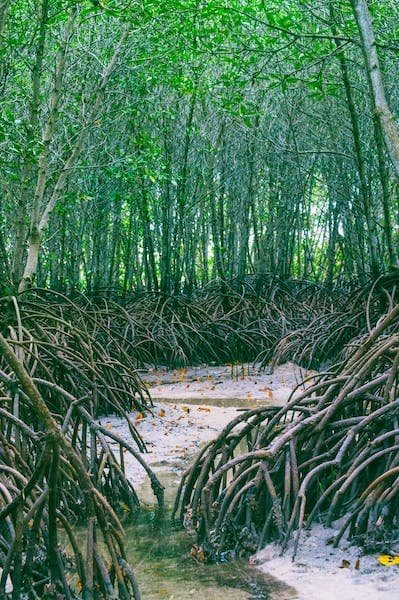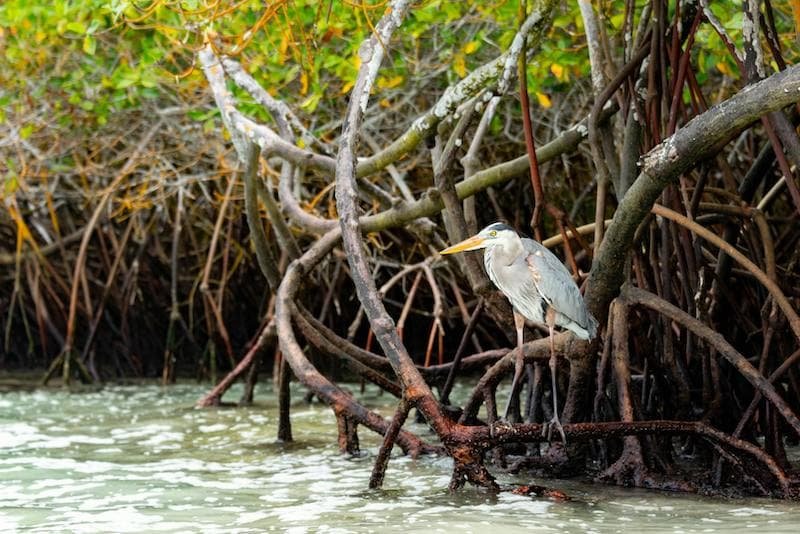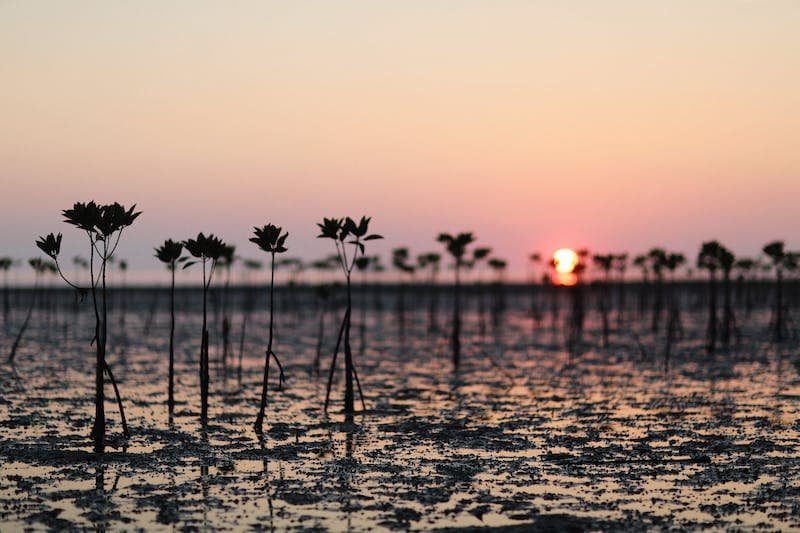
 Olivia Møller
Freediver - Activist - Explorer
Olivia Møller
Freediver - Activist - Explorer

 Olivia Møller
Freediver - Activist - Explorer
Olivia Møller
Freediver - Activist - Explorer
Mangroves, often overlooked and undervalued, play a pivotal role in our planet's health. Beyond their picturesque landscapes and unique ecosystems, mangroves stand out as unsung heroes in the fight against climate change. Their exceptional ability to sequester carbon dioxide, a major greenhouse gas, makes them an invaluable asset in the global effort to mitigate the impacts of climate change.
Mangroves, often relegated to the periphery of environmental discussions, possess a profound ecological significance that extends beyond their aesthetic appeal. Thriving in the intertidal zones of tropical and subtropical coastlines, these unique ecosystems are characterized by salt-tolerant trees, shrubs, and an intricate network of vegetation. It is within this delicate balance between land and sea that mangroves carve out their distinctive identity as "blue carbon" ecosystems.
In these coastal habitats, a symphony of life unfolds, as mangroves provide a crucial haven for a diverse array of marine and terrestrial species. Their tangled roots, submerged in brackish waters, create a labyrinthine refuge for fish, crustaceans, and nesting birds. The dynamic interface between land and water in mangrove ecosystems fosters a rich biodiversity that is finely attuned to the ebb and flow of tides.
As nature's pioneers at the water's edge, mangroves adapt to the challenges of saline conditions through a suite of remarkable physiological strategies. Beyond their ability to withstand brackish waters, mangroves exhibit an extraordinary capacity for carbon sequestration, positioning them as essential players in the global carbon cycle.

Mangroves, in their role as guardians of carbon, employ a sophisticated set of mechanisms to sequester atmospheric carbon dioxide. The verdant canopies of mangrove trees act as aerial gatekeepers, absorbing carbon dioxide during the process of photosynthesis. Through this biochemical alchemy, carbon is transformed into organic compounds that are then stored within various components of the mangrove ecosystem.
The real magic, however, unfolds beneath the water's surface. The intricate root systems of mangroves, submerged in nutrient-rich sediments, play a pivotal role in carbon storage. These submerged roots serve not only as anchors for the trees but also as conduits for carbon, channeling it into the sediment where it becomes locked away. It is in these submerged soils that mangroves create a stable and enduring carbon sink, contributing to the mitigation of climate change.

Research endeavors into the carbon sequestration potential of mangroves reveal the magnitude of their impact on global carbon budgets. The Sundarbans, the world's largest mangrove forest, emerges as a focal point for studies showcasing the exceptional carbon sequestration capabilities of these ecosystems. In these watery landscapes, mangroves demonstrate an ability to sequester up to four times more carbon per unit area compared to their terrestrial counterparts.
The significance of mangroves in the carbon cycle gains further validation through the meticulous modeling conducted by the Intergovernmental Panel on Climate Change (IPCC). Their estimations underscore the substantial contribution of mangrove ecosystems, sequestering millions of metric tons of carbon dioxide annually and thus playing a crucial role in mitigating the impacts of climate change.

Yet, despite their ecological prowess, mangroves face an array of threats, predominantly stemming from human activities. Coastal development, aquaculture expansion, and deforestation collectively contribute to the degradation of mangrove habitats. As these ecosystems diminish in size, so does their capacity to fulfill their vital role as carbon sinks.
The ramifications of mangrove degradation extend beyond the loss of biodiversity. It has profound implications for the global carbon balance, as a decline in mangrove health translates to a reduction in their ability to sequester carbon. Paradoxically, the degradation process may even result in the release of stored carbon back into the atmosphere, amplifying the greenhouse effect.
In the face of these challenges, the imperative for sustainable mangrove management becomes apparent. Conservation efforts should transcend a narrow focus on individual trees to encompass the entirety of the mangrove ecosystem. Engaging local communities in these efforts not only safeguards the environment but also provides tangible socio-economic benefits.
Recognition of the urgency surrounding mangrove conservation has spurred global initiatives centered on restoration and reforestation. These endeavors aim not merely to replant trees but to rejuvenate entire ecosystems. Successful restoration projects attest to the resilience of mangroves, highlighting the potential for these ecosystems to recover and resume their role as stalwart carbon guardians.

The profound significance of mangroves in carbon sequestration unfolds against the backdrop of their intricate ecosystems. As nature's architects along the water's edge, mangroves showcase a delicate ballet of adaptation and resilience. Yet, their future is imperiled by human-induced threats that necessitate immediate and concerted action.
Recognizing the true value of mangroves as nature's carbon guardians transcends ecological appreciation; it is a call to action in the face of climate change. The intricate dance between land and sea that defines mangrove ecosystems is not merely a spectacle of nature but a crucial component in the intricate web of life on Earth. Preserving this delicate balance is not just an environmental imperative but a collective commitment to a sustainable and resilient future.